Cost-effective
CNC machining is the best option in terms of price point if you need to make just a few prototypes. Unlike the injection molding method, where you might need a few months to get the mold and tolerances ready, CNC prototype machining could start immediately once the blueprint and the tolerances are set just after a few weeks.
High Tolerance
Another advantage that helps speed up the production of prototypes is the high tolerance ranges they tend to have. Unlike 3D printing, you can make your prototype just as detailed as the finished product. This is a great advantage for those who want to use the prototypes for structural and functional tests.
From Prototype to Production
In quite a few cases, making the prototype is one of the latter degrees of production. Except for those who want to test the functionality of the product or use the prototype to pitch the product to a potential investor, the prototype helps to fasten up production as most of the requirements needed for production are ready at this point.
Great similarity to the product
Unlike 3D-printed prototypes, CNC machining prototypes tend to have quite a lot of similarities to the product. Since machining centers are fully capable of producing end-use parts as well as prototypes, it is possible to create prototypes that are close to the end product.
Part of this is down to materials. Many engineering metals are highly machinable, which allows engineers to make prototypes from the same (or similar) materials they will use for the final part. But the quality of the process itself is also a factor: machined parts are strong and do not exhibit weakness along certain axes like printed parts. In contrast, the machining process itself can even replicate other processes like sheet metal forming.

